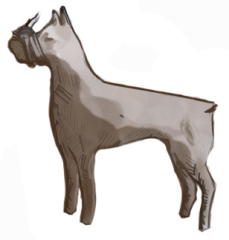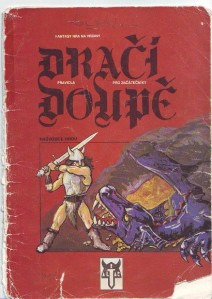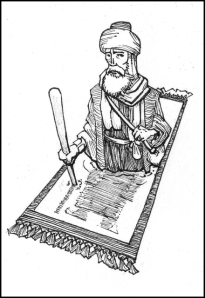“Ooww!” moaned Vilas in a rather high pitched voice. He did find himself in a bed with a pretty serving girl just as he had planned for tonight. Yet the circumstances were somewhat different. He laid on his stomach, the girl was applying bandages to the nether parts of his back and to complete the humiliation, his companion Osborn the Ranger sat on a chair across from the bed and grinned like a devil.
“It must have been the knife that damned kid sold me!” mused Vilas in an attempt to explain the failing of his magical lore, more to himself than to anyone else. “I bet it was not stolen at all. You can’t trust the thieves these days!”
Athough Kleftis, the God of Thieves, has no real clergy or organized cult he is said to recognize giving of stolen silver to the beggars, drunken shouting of his name and certain obscure rituals passed on from master thiefs to their apprentices. One of these is the creation of a dog charm.
 It is said that to create a dog charm you have to carve a small wooden figurine of a dog using a stolen knife and then tie its mouth with a strand from a hanged thief’s rope. Furthermore, you can only work on the figurine during the night and you must finish it under a full moon. Also, you must not speak a word while working on the dog charm and when done, you should bury the knife on a crossroads. As it usually is with these rituals, nobody knows which of the steps are the important ones and which were simply picked up along the way.
It is said that to create a dog charm you have to carve a small wooden figurine of a dog using a stolen knife and then tie its mouth with a strand from a hanged thief’s rope. Furthermore, you can only work on the figurine during the night and you must finish it under a full moon. Also, you must not speak a word while working on the dog charm and when done, you should bury the knife on a crossroads. As it usually is with these rituals, nobody knows which of the steps are the important ones and which were simply picked up along the way.
A dog charm is useful to the thief in two ways. Firstly, it renders all mundane dogs disinterested in the person of the thief. Secondly, it helps the thief blend in whenever he tries to blend in, sneak about and generally be stealthy.
Rules: Every dog charm has 1d6 charges. Whenever a thief carrying the charm rolls for Stealth, the charm automatically adds a one point bonus to his skill consuming one of the charges. When the charm has no charges left, it loses all its abilities. Anytime a character buys, creates or othervise procures a dog charm, there is a 20% chance that it is botched and works the other way around (making dogs extremely interested in the thief and substituting one point from the Stealth skill until the charges run out).


